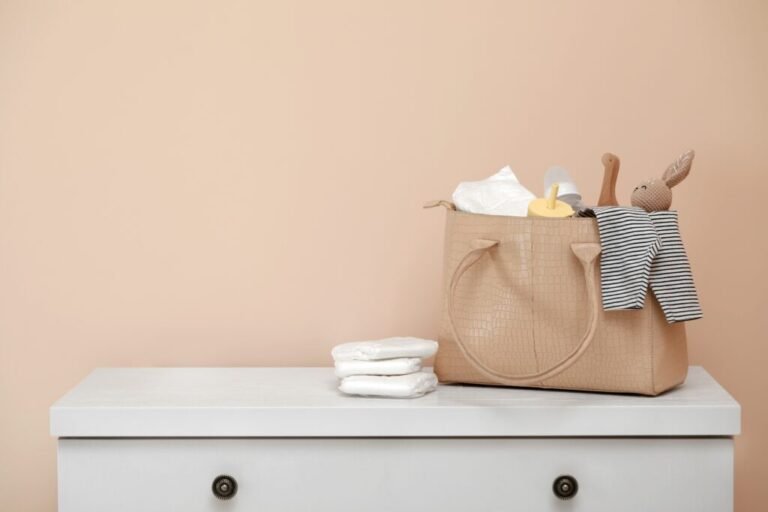Debating where babies come from can make even the most confident parents freeze up. If your child asks, it can be difficult to know what is appropriate to say or where to start. In this blog, Brook’s Rin Harris shares some tips for talking about sex, reproduction and growing up, whether your child is four, nine or just starting to ask more detailed questions.
Being open about how babies are made helps kids see sex and reproduction as a normal part of life, not something secret or shameful. When parents speak honestly, it shows children that they can come to you if they are confused or worried. It also supports what they learn at school, helping to build confidence and understanding. Talking early and openly can even help keep children safer as they grow. When young people know about consent, body changes and boundaries, they are more likely to recognize when something is wrong and speak up.
When to start talking
These conversations can be difficult to navigate. But here’s the good news: there is no such thing as a perfect script, and you don’t have to be an expert. What matters most is giving honest, age-appropriate answers and showing your child that it’s okay to ask.
If your child is old enough to ask, they are old enough for a simple, factual answer. You can always rely on this understanding over time. Rin says: “The national curriculum stipulates that children learn about conception in Year 5. But if they ask earlier than you expect, you don’t have to lie. You can give a short, honest answer without going into detail.” For very young children, a basic answer like, “Dad’s sperm met mom’s egg and the baby grew in mom’s womb,” is enough. You can also explain that when people get older, their bodies change to be ready for reproduction. Around ages nine to ten, it’s good to start talking about puberty and anatomy. Puberty can start earlier than parents expect (some kids start their period around age ten), so preparation helps.
How to have the conversation
Try to keep it relaxed and natural. Reproduction and sexuality are a part of life for everyone, not something embarrassing or dirty. It helps to find a quiet, private place, such as at home or on a walk. Avoid crowded public places where you may feel watched or distracted. Give your child space to ask questions. If you don’t know an answer, say so and learn together. Rin says, “After twelve years of teaching, I still have questions I don’t know the answer to. It’s good to say you’ll look it up and talk about it later.”
What to cover
Start with puberty and how their bodies can change: hormones, muscle and body shape, voice changes, hair growth, skin and sweat changes, curiosity about sex and masturbation, and genital anatomy. Once you’ve covered that, you can explain the basics of reproduction. There are three things needed to make a baby: a viable egg, a viable sperm, and a uterus or womb for the fertilized egg to develop. Explain that sperm comes from someone with typically male anatomy (penis and testicles) and that eggs and a uterus are found in people with typically female anatomy, vaginas (ovaries). It may help to look at diagrams or reputable websites to show what’s going on inside the body. Then explain how the egg and sperm usually meet – most often through vaginal sex, where the penis enters the vagina and releases semen containing semen. You can also explain that sex does not always lead to pregnancy because many people use contraception. This can naturally lead to talking about different kinds of families – stepfamilies, blended families, families with two moms or two dads, or single parents. As your child gets older, you can mention methods of assisted reproduction such as IVF or surrogacy. Whenever you talk about sex, it’s important to mention consent and readiness. The average age for people in the UK to have sex for the first time is around 16 or 17, but the right time is different for everyone. You can also enter any personal, religious or cultural values you have about sex, relationships or marriage.
Common myths to clear up
You don’t have to be an expert, but it helps to know what’s true. Rin has heard many myths while teaching, and some are surprisingly common. Here are a few to keep straight:
- The vulva is the external genitalia. the sinus is the muscular tube.
- People pee from the urethra, not the vagina.
- The cervix separates the vagina and the uterus. Only tiny cells like sperm can get through.
- Not everyone has a hymen, and it doesn’t always tear or bleed during sex.
- Babies grow in the womb, not in the stomach or belly.
- Pre-cum and semen contain semen, but they are not just semen.
- The vagina doesn’t get “looser” from sex—it’s made of muscles that expand and contract.
- Everyone has the main sex hormones, just in different amounts.
The most important thing is honesty. Children don’t need every detail right away, but they need accurate information that grows with them. Talking about where babies come from doesn’t have to be awkward. It can be a positive, ongoing conversation that helps your child understand their body, feel confident asking questions, and build healthy attitudes for the future.
